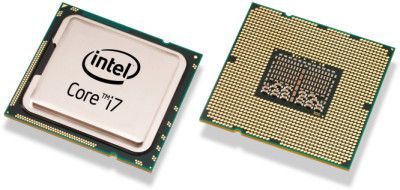From our front-page news:
Been holding out on building a new computer because Lynnfield is en route? Well, it doesn't look like the wait will be that much longer, as the prospective release date is hovering around September. That's not straight out of Intel's mouth, but the rumor-mill, of course. The timing doesn't seem unrealistic, though, especially with the company's Developer Forum occurring the same month, and generally, major launches such as this do tend to happen around this time.
So what models are to come out? Again, this hasn't been verified by Intel, but previous leaks have been accurate more often than not. On the Core i7 side (as revealed last month, the Core i7 branding isn't limited to Bloomfield), it looks like we'll be seeing an i7-870, at 2.93GHz and also an i7-860 at 2.80GHz. I truly don't understand why two products with frequencies so close to one another are needed, but the pricing should be interesting to look out for.
On the Core i5 side, the first known model is the i5-750, at 2.66GHz. Unlike the Core i7 models, this (and all the others to come I'm sure), lack HyperThreading, so like Intel's Core 2 line-up, the Quad-Cores here will stay at 4 threads. For most regular consumers, the lack of HT isn't likely to make a difference, but as we discovered in our launch article, it will likely affect those using workstation applications (and also server).

The Core i5 performance-level brand will share both Lynnfield quad-core 4-thread chips and Clarkdale dual-core 4-thread chips that are yet to be announced. The entire brand will be operating on socket LGA 1156. As for the Core i3 entry-level brand, it will consist of all Clarkdale dual-core 4-thread chips that are yet to be announced. Finally, at the very bottom will be Pentium branded Clarkdale dual-core 2-thread chips running on LGA 1156 that are yet to be announced.
Source: Fudzilla
So what models are to come out? Again, this hasn't been verified by Intel, but previous leaks have been accurate more often than not. On the Core i7 side (as revealed last month, the Core i7 branding isn't limited to Bloomfield), it looks like we'll be seeing an i7-870, at 2.93GHz and also an i7-860 at 2.80GHz. I truly don't understand why two products with frequencies so close to one another are needed, but the pricing should be interesting to look out for.
On the Core i5 side, the first known model is the i5-750, at 2.66GHz. Unlike the Core i7 models, this (and all the others to come I'm sure), lack HyperThreading, so like Intel's Core 2 line-up, the Quad-Cores here will stay at 4 threads. For most regular consumers, the lack of HT isn't likely to make a difference, but as we discovered in our launch article, it will likely affect those using workstation applications (and also server).

The Core i5 performance-level brand will share both Lynnfield quad-core 4-thread chips and Clarkdale dual-core 4-thread chips that are yet to be announced. The entire brand will be operating on socket LGA 1156. As for the Core i3 entry-level brand, it will consist of all Clarkdale dual-core 4-thread chips that are yet to be announced. Finally, at the very bottom will be Pentium branded Clarkdale dual-core 2-thread chips running on LGA 1156 that are yet to be announced.
Source: Fudzilla
